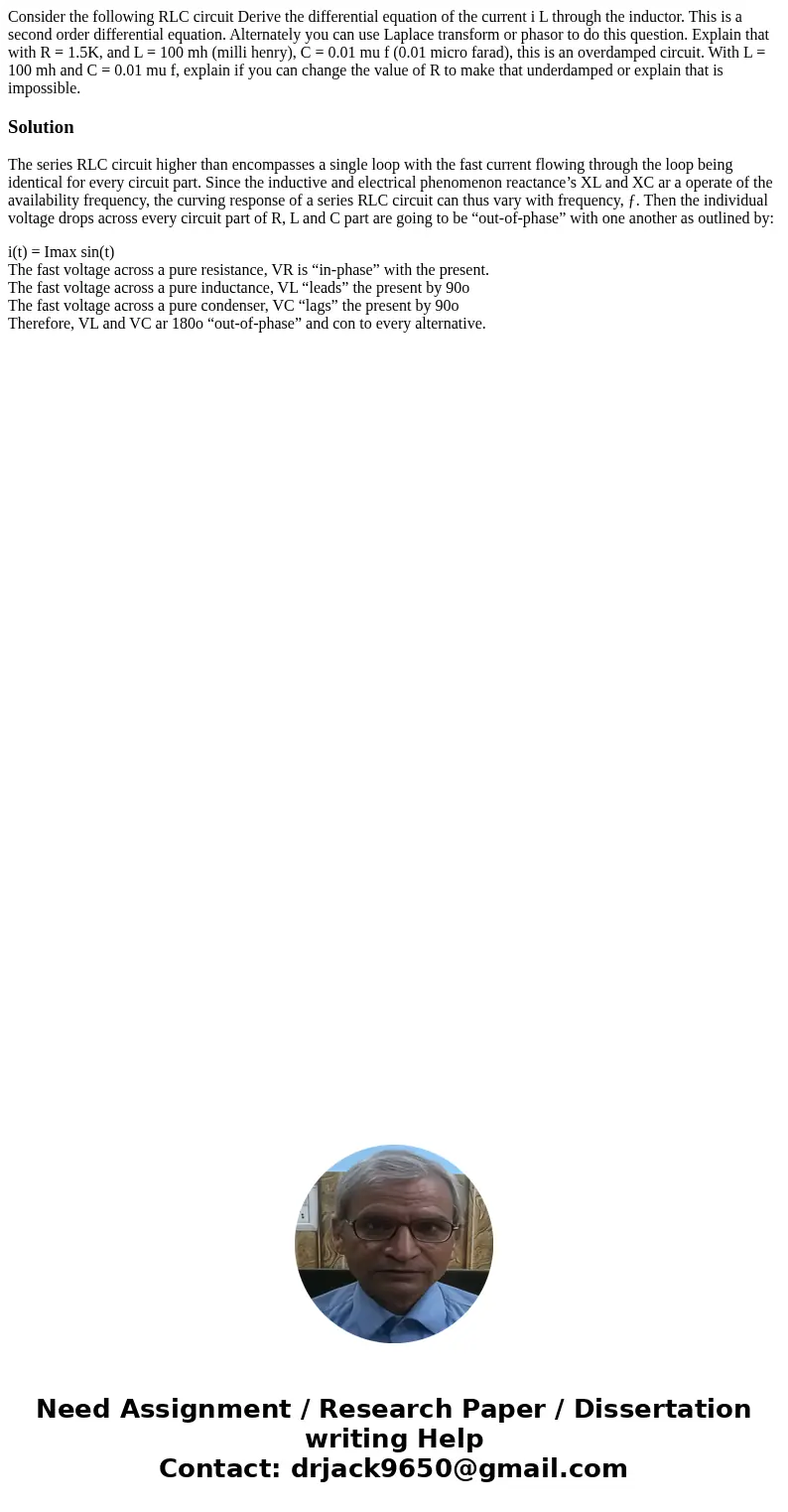Consider the following RLC circuit Derive the differential e
Solution
The series RLC circuit higher than encompasses a single loop with the fast current flowing through the loop being identical for every circuit part. Since the inductive and electrical phenomenon reactance’s XL and XC ar a operate of the availability frequency, the curving response of a series RLC circuit can thus vary with frequency, ƒ. Then the individual voltage drops across every circuit part of R, L and C part are going to be “out-of-phase” with one another as outlined by:
i(t) = Imax sin(t)
The fast voltage across a pure resistance, VR is “in-phase” with the present.
The fast voltage across a pure inductance, VL “leads” the present by 90o
The fast voltage across a pure condenser, VC “lags” the present by 90o
Therefore, VL and VC ar 180o “out-of-phase” and con to every alternative.

 Homework Sourse
Homework Sourse